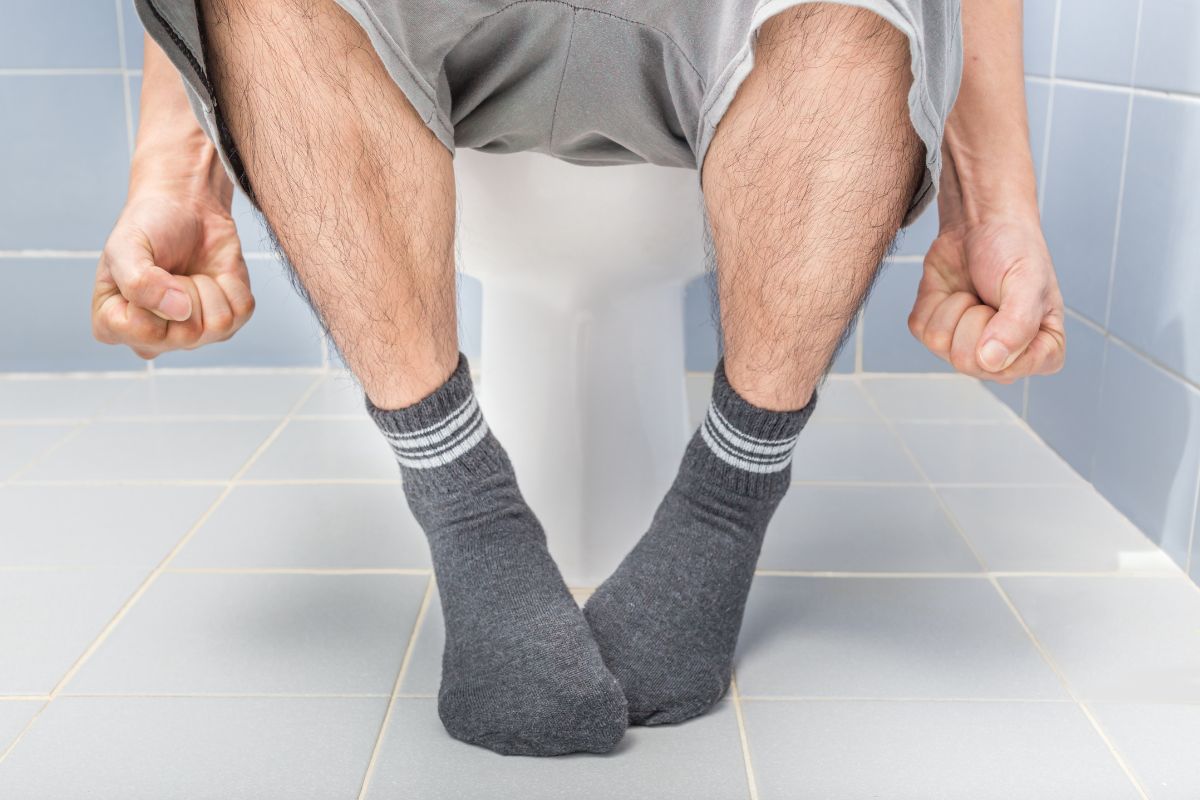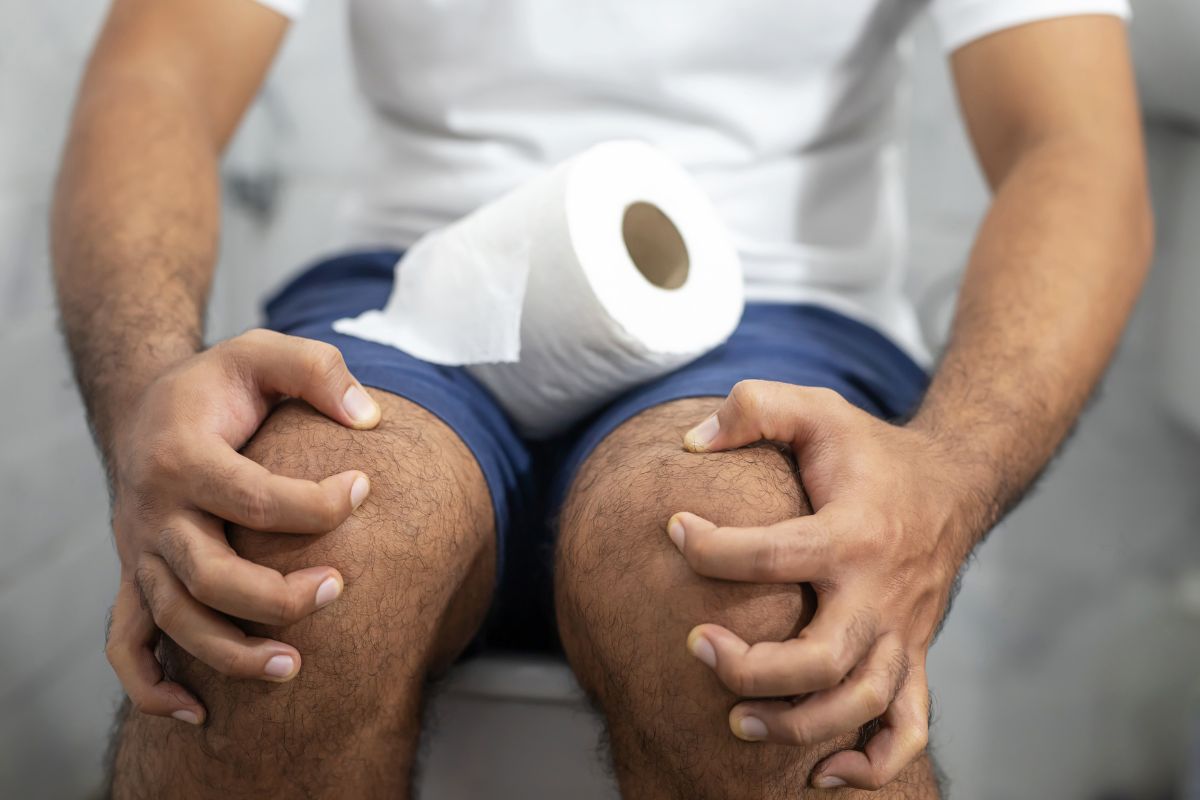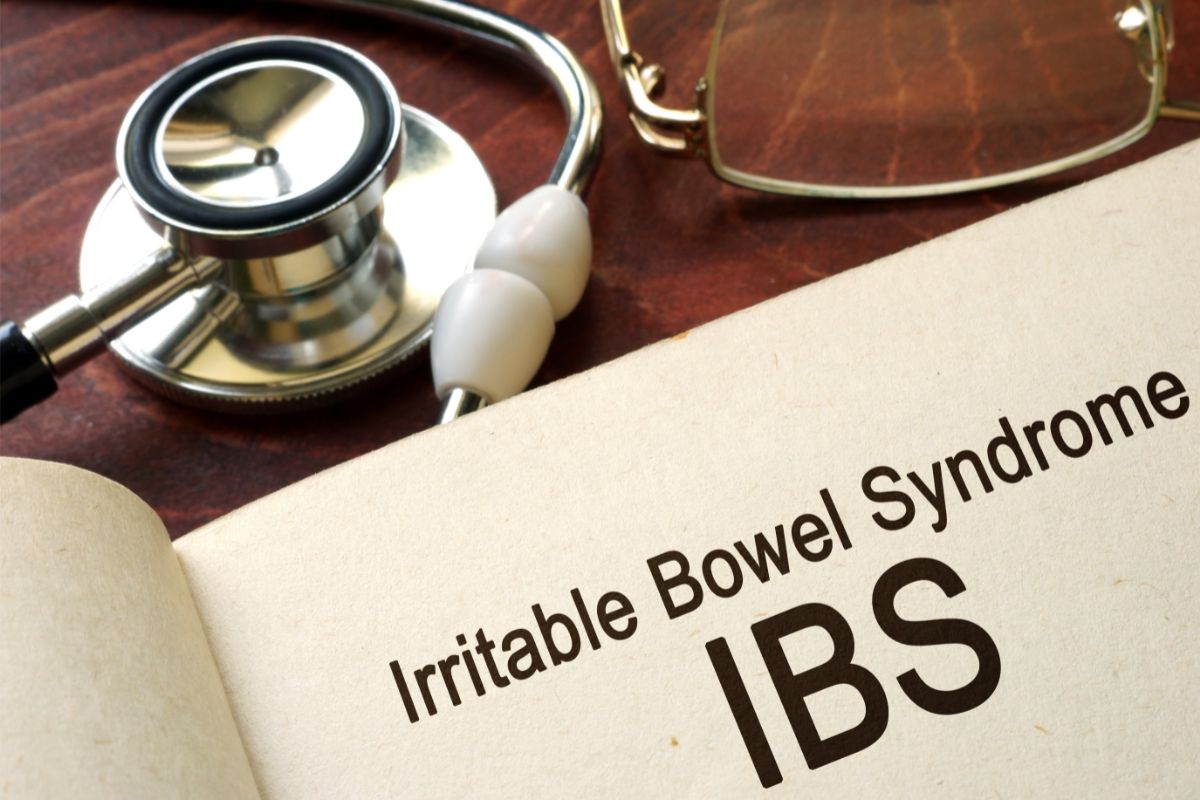What are the three different types of irritable bowel syndrome? We’ll tell you all about the different types of IBS – as well as how you can learn how to manage the symptoms!

IBS With Constipation
The first type of IBS is IBS with constipation. This type of IBS is also known as IBS-C.
People who have IBS-C find that they suffer with constipation as a consequence of their IBS. This is typically characterized as when a quarter or more of stools in the individual are lumpy and hard, and less than a quarter of the stool content is watery.
Unsurprisingly, IBS with constipation can be deeply uncomfortable for many people. It can lead to many other unwanted related symptoms too. People who have IBS-C commonly complain that they have stomach pain, for instance.
It’s possible that sufferers of IBS with constipation can also feel bloated, and an uncomfortable “full” feeling. They might experience difficulty moving their bowels – using the toilet can be a less than fantastic experience, to say the least.
They might find themselves able to use the toilet less often than usual, despite still needing it as much as usual – as is of course typical for sufferers of constipation.
Of course, as will all forms of Irritable Bowel Syndrome, IBS with constipation can be managed. Many sufferers of IBS with constipation find that a change in diet can be extremely beneficial, and can make them feel a lot better.
Changes in lifestyle can help too, and many people with IBS-C can live far more comfortably with a few changes in their routine and eating habits.
If you think you have the symptoms of IBS-C, then you should speak to a doctor about it.
They’ll be able to help you with your symptoms, correctly diagnose you, and help you to understand what’s happening with your body and what can be done to make things easier for you.
IBS With Diarrhea
Irritable Bowel Syndrome can also be accompanied with diarrhea. This type of IBS is known as IBS-D, or IBS with diarrhea.
This type of IBS shares some symptoms with IBS-C, such as stomach pain – but also has some issues that are the opposite of those caused by IBS with constipation.
One key difference is in the nature of the stool produced by people who are suffering with IBS-D.
Unlike those with IBS-C, who tend to have far more solid stool, with a much lower liquid content, sufferers of IBS with diarrhea tend to have a far more liquid consistency to their stool.
Typically, IBS with diarrhea is diagnosed when more than 25% of the individual’s bowel movement is loose and watery, and less than a quarter of the same stool sample is hard and solid.
This is a stool that is far different from that produced by sufferers of IBS with constipation.
IBS-D sufferers tend to feel the need to use the bathroom more often than people with IBS-C. Their bowel movements are typically quicker, as well as more frequent.
They might also find themselves to produce more gas. And, of course, as the stool tends to be of a more liquid nature, going to the bathroom can be a more messy experience for people who have IBS with diarrhea.
However, abdominal pain is common for sufferers of both IBS-C and IBS-D.

IBS With Mixed Bowel Habits
The third type of irritable bowel syndrome is called IBS with mixed bowel habits, or IBS-M. It’s also known as IBS-A, which stands for irritable bowel syndrome with alternating constipation and diarrhea.
Essentially, this type of IBS is a mixture of both IBS with constipation and IBS with diarrhea. Sufferers of IBS-M tend to have symptoms from both IBS-C and IBS-D.
To be classified as having IBS-M, typically the stool sample of the individual needs to therefore sit somewhere in between the types produced by sufferers of IBS-C, and sufferers of IBS-D.
IBS-M stools will have both more than a quarter of the content be hard and solid, and more than a quarter of the content watery and loose.
This mixed stool type can be more troublesome for people who have it than it can be for people with IBS-C and IBS-D, as it is symptomatic of both the other types. Indeed, it can feel contradictory for the person with IBS-M!
Of course, IBS-M typically also comes with the stomach pain typical of all forms of irritable bowel syndrome.
Sufferers can also feel bloated and tired. And, it’s normal for sufferers of irritable bowel syndrome to feel some level of distress too!
However, help and treatment is of course available to alleviate the symptoms and distress caused by irritable bowel syndrome.
Treatment For IBS
The absolute first thing that any sufferer of IBS should do is to see a doctor! While it’s always tempting to conduct your own research by looking online, the simple truth is that medical diagnosis is very difficult, and requires years of training!
You can’t guess what’s happening with you simply by matching your symptoms to an article you read online, so no matter what, seek medical advice from a doctor about any symptoms you have!
Many sufferers of irritable bowel syndrome find that they have to make some changes to their lifestyle in order to have relief from the symptoms of IBS.
These changes aren’t always very significant – and, generally speaking, they’re often things that even people without IBS should do!
Changes in your diet can help with your IBS, as the food and drink we have every day plays a part in the way our body feels. Some foods are known triggers for IBS – coffee is one of the more well known ones!
And making some lifestyle changes to help reduce stress can also play a part in helping out with IBS.
You’re not alone – millions of people in America have IBS! The most important thing that you can do is to see a doctor – they’ll be able to give you the advice and support that you need.
Conclusion
IBS needn’t be something you suffer alone with! Talk to your doctor, and you can start learning how to manage your symptoms!
- Understanding Male Reproductive Health: A Complete Guide - February 2, 2025
- Simple Healthy Skin Habits for Radiant Skin - December 6, 2024
- Unlocking the Connection Between Nutrition and Mental Health - December 3, 2024








